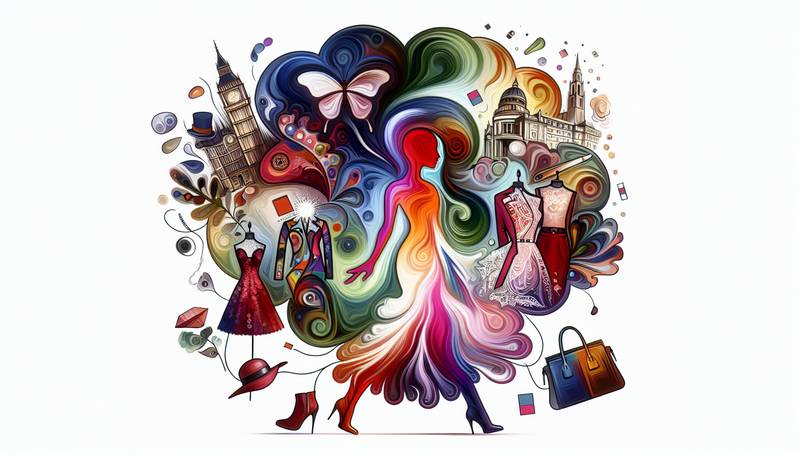The Impact of Psychology on Fashion

Introduction: The Bonkers World of Fashion PsychologyI was sauntering along the bustling streets of that monument to fashion, London, a city that prides itself on being both avant-garde and profoundly traditional, when it struck me like a bolt from the blue: the clothes we wear are not just a frivolous matter of style, they're intrinsically linked to our deepest psychological desires and needs. A sort of sartorial Freudian slip, if you will.After all, as the old saying goes, the clothes make the man – or woman, or gender non-conforming individual – and there is a veritable cornucopia of research out there devoted to examining the impact of psychology on fashion. So, let us embark together on a delightful romp through the inner workings of the human mind and the outer trappings of our wardrobes, shall we?A Brief History of Fashion Psychology: From Adam and Eve to Alexander McQueenEver since Adam and Eve donned their first fig leaves, humans have been using clothing to convey certain messages, whether consciously or subconsciously. In more recent times, psychologists have delved into this sartorial wonderland, exploring the various ways in which fashion both reflects and influences our thoughts, feelings, and behaviors.From the stiff collars and corsets of the Victorian era to the "power dressing" of the 1980s, the clothes we wear have always been deeply tied to our social status, self-esteem, and even our political beliefs. But how exactly does this mind-clothing connection work? And what can we learn from it?The Power of Color: Dressing for Success and SerenityIt is no secret that the colors we choose to wear can have a powerful impact on our moods and emotions. In fact, entire fields of study, such as color therapy, have sprung up around this fascinating phenomenon. But while you may already be familiar with the idea that certain colors can evoke specific feelings (e.g., red for passion, blue for tranquility), did you know that the colors you wear can also affect how others perceive you? - Donning a bold red dress or tie can make you appear more confident and assertive, while also increasing your chances of success in the workplace or the dating scene.
- On the other hand, dressing in calming shades of blue or green can help you project an air of competence and stability, making you more likely to be trusted and respected by your peers.
- And if you want to blend into the background and avoid drawing attention to yourself? Try wearing beige, gray, or other neutral hues – but be warned that this may also make you seem more passive and submissive.
Personal Style: From Conformity to RebellionOur choice of clothing also serves as a form of self-expression, allowing us to communicate our personalities, values, and even our group affiliations through the garments we don. For example: - Adhering to the latest fashion trends can signal a desire for social acceptance and conformity, while a preference for vintage or alternative styles may indicate a more rebellious or individualistic nature.
- Dressing modestly can be a sign of respect for cultural or religious norms, while revealing clothing can be an expression of confidence, sexuality, or a desire for attention.
- Clothing emblazoned with logos or slogans can showcase our allegiance to certain groups or causes, whether it's a sports team, a designer brand, or a political movement.
Of course, these associations can vary depending on the context and the individual, but the basic principle remains the same: our clothing choices are a means of constructing and projecting our identities.From Fabric to Feeling: The Emotional Pull of Textures and MaterialsAs any tactile individual will attest, the textures and materials of our clothing can also have a profound impact on our emotional state. Whether it's the softness of cashmere against your skin or the scratchiness of a cheap polyester blend, the way our clothes feel can influence our mood and even our sense of self-worth.For example, studies have shown that wearing luxurious fabrics can boost our self-esteem and make us feel more attractive, while donning more rough materials can have the opposite effect. Moreover, the weight of our garments can also affect our perceptions of ourselves and others – a concept known as "enclothed cognition."In one particularly intriguing study, participants who wore a white lab coat associated with doctors performed better on attention-related tasks than those who wore an identical coat but were told it was a painter's smock. This suggests that the symbolic meaning we attach to clothing can actually shape our thoughts and behaviors.Conclusion: Dressing for Psychological SuccessSo, what can we glean from this whirlwind tour of fashion psychology? For one, it's clear that our clothing choices are far more than just superficial adornments – they're deeply intertwined with our psychological well-being and social interactions.With this knowledge in hand, consider how you can harness the power of fashion to not only express your individuality but also improve your mental health and interpersonal relationships. Whether it's incorporating more uplifting colors into your wardrobe, experimenting with new textures and materials, or simply taking the time to dress in a way that makes you feel confident and authentic, the world of fashion is truly a playground for the psyche.
|
|








